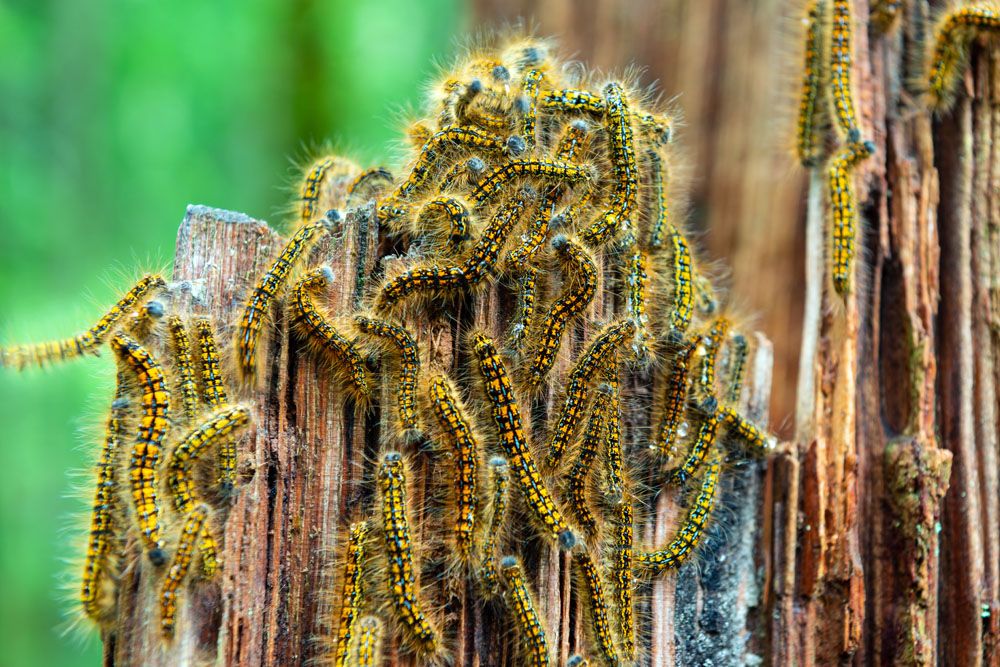
Western Tent Caterpillars – Malacosoma californicum
Western Tent Caterpillars – Malacosoma californicum
Scientific name: Malacosoma californicum
Common name: Western tent caterpillars
Appearance: Western tent caterpillars are reddish-brown, tan, or white moths with a maximum wingspan of 50.8 mm. The forewings show orange stripes that are darker than the wings. The larvae are initially dark brown with white hairs, which later turn pale blue with black markings all over the body. They feature blue-white lines on each body segment and are covered with orange-brown hairs. During pupation, they weave a silk cocoon around themselves, which is powdered in yellow and white.
Host plants or food: Western tent caterpillars mainly feed on red alder, crabapples, madrones, aspen, wax currents, and willows.
Territory: Throughout North America
Mode of damage: Western tent caterpillars are leaf chewers; they feed on the leaves of host plants
Habits and life history
Western tent caterpillars lay chocolatey-brown eggs on twigs, which hatch into larvae in spring.
The larva spins a silk tent around itself and rests in the tent during the day. It leaves the tent to feed and returns back to the tent.
It feeds during the night and completes the larval development in a month and a half.
It builds a yellowish-white cocoon and pupates for almost two weeks, after which it emerges as an adult.
They produce one generation per year.
